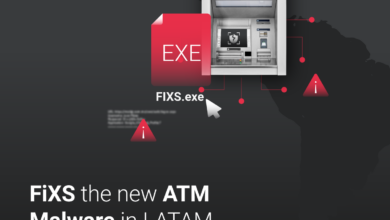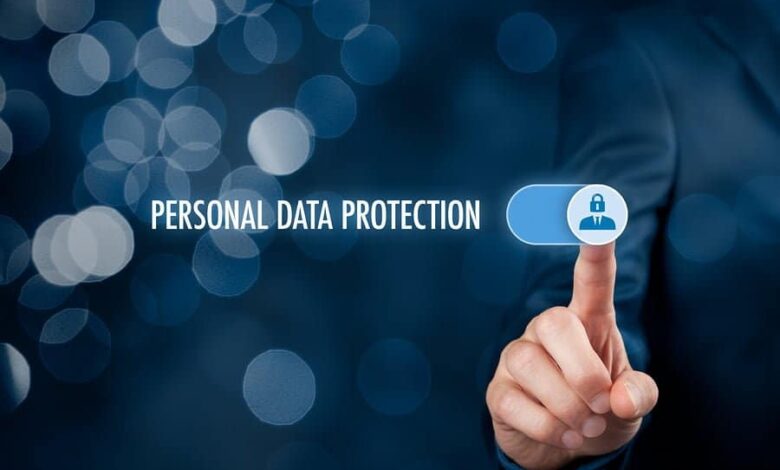
Why is Secure Collaboration in the Digital Age So Important?
Why is secure collaboration in the digital age so important? It’s a question that resonates more deeply than ever before. In today’s hyper-connected world, where remote work is the norm and data flows freely, the need for robust security measures in our collaborative efforts is paramount. We’re talking about protecting sensitive information, intellectual property, and even the very reputation of our businesses and projects.
Ignoring this crucial aspect can lead to devastating consequences, from financial losses to irreparable damage to trust.
This post dives into the critical reasons why secure collaboration is no longer a luxury, but a necessity. We’ll explore the threats, vulnerabilities, and best practices that can help you navigate the complexities of the digital landscape and keep your collaborative projects safe and sound. Get ready to tighten up your security game!
The Rise of Remote Work and Collaboration
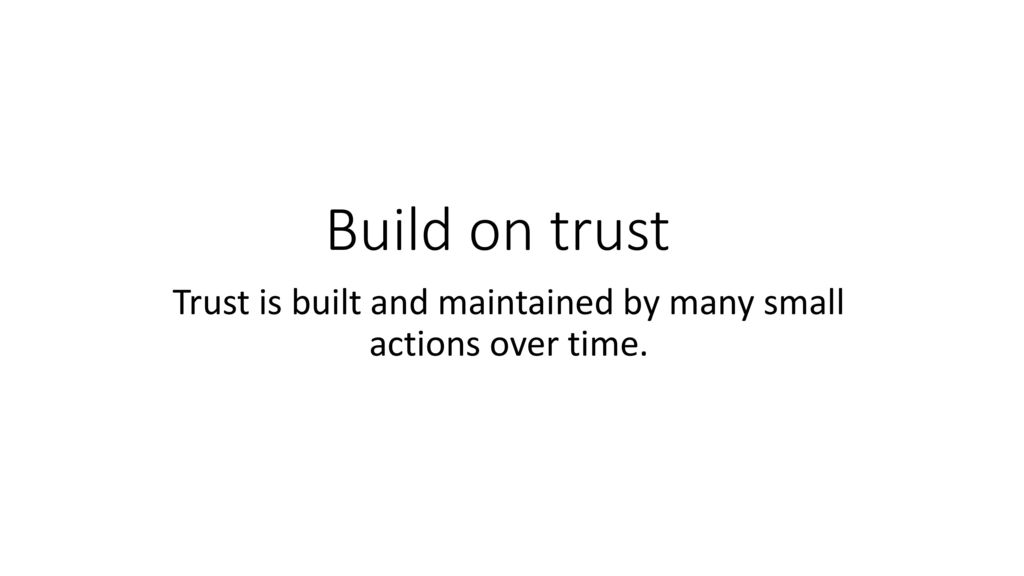
The dramatic shift towards remote work, accelerated by recent global events, has fundamentally altered how businesses operate and collaborate. This widespread adoption of distributed workforces has simultaneously amplified the need for robust and secure collaboration tools while also creating new challenges in maintaining data privacy and integrity. The interconnected nature of modern work means a single security lapse can have far-reaching consequences.The impact of remote work on the need for secure collaboration tools is undeniable.
Previously, data security often relied on physical security measures and controlled network environments within a central office. Now, sensitive information is accessed and shared across various devices, networks, and geographical locations, increasing the attack surface significantly. This necessitates a shift towards cloud-based solutions and robust security protocols to protect sensitive data from unauthorized access and cyber threats.
Challenges of Maintaining Data Security in Distributed Work Environments
Maintaining data security in a distributed workforce presents unique hurdles. The reliance on personal devices, public Wi-Fi networks, and potentially less secure home networks expands the vulnerability landscape. Moreover, managing access control and ensuring compliance with data protection regulations across multiple locations and jurisdictions becomes significantly more complex. Effective security requires a multi-layered approach, incorporating strong authentication, data encryption, and regular security audits.
The lack of centralized IT support and oversight can also hinder the quick identification and resolution of security breaches.
Examples of Security Breaches Resulting from Insecure Remote Collaboration
Several high-profile security breaches highlight the risks associated with insecure remote collaboration. For example, the use of unsecured video conferencing platforms has led to data leaks and unauthorized access to sensitive meetings. In other instances, employees using personal devices for work without proper security measures have inadvertently exposed company data to malware or phishing attacks. These incidents often result in financial losses, reputational damage, and legal repercussions for organizations.
A recent case involved a company whose cloud storage, accessed by employees working remotely, was compromised due to weak password policies, leading to the theft of intellectual property.
Hypothetical Scenario Illustrating the Consequences of Insecure Remote Collaboration, Why is secure collaboration in the digital age so important
Imagine a pharmaceutical company developing a new drug. Researchers across different countries collaborate using a shared cloud storage platform with weak access controls. An employee in one location uses a personal laptop with outdated antivirus software to access sensitive research data. This laptop becomes infected with malware, which then compromises the cloud storage, potentially exposing the drug’s formula, clinical trial data, and intellectual property to competitors or malicious actors.
The consequences could include significant financial losses due to intellectual property theft, delays in drug development, and potential harm to the company’s reputation. Further, legal ramifications and regulatory fines are highly probable, impacting the company’s financial standing and overall credibility.
Data Protection and Privacy Concerns
The rise of digital collaboration brings unprecedented opportunities, but it also introduces significant challenges regarding data protection and privacy. Sharing sensitive information across multiple platforms and devices increases the risk of breaches, highlighting the urgent need for robust security measures and a clear understanding of legal and ethical responsibilities. The consequences of data leaks can be severe, ranging from financial losses and reputational damage to legal penalties and erosion of public trust.The handling of sensitive data during collaboration necessitates a multi-faceted approach that prioritizes both legal compliance and ethical considerations.
Organizations must establish clear policies outlining data handling procedures, access controls, and incident response plans. Furthermore, fostering a culture of data privacy awareness among employees is crucial to mitigate the risk of human error, a major contributor to data breaches.
Legal and Ethical Implications of Handling Sensitive Data
Organizations collaborating digitally must navigate a complex landscape of data protection regulations. Failure to comply can lead to substantial fines and legal repercussions. Ethical considerations, such as transparency and user consent, are equally important in building and maintaining trust. For example, a company failing to inform users about how their data is being used during a collaborative project could face legal action and severe reputational damage.
The ethical imperative is to treat user data with the utmost care and respect, prioritizing transparency and user autonomy.
Relevant Data Protection Regulations
Several regulations govern the handling of personal data in digital collaborations. The General Data Protection Regulation (GDPR) in Europe, the California Consumer Privacy Act (CCPA) in the United States, and similar laws in other jurisdictions impose strict requirements on data collection, processing, and storage. These regulations mandate obtaining explicit consent, providing data security measures, and allowing users to access, correct, or delete their data.
Compliance requires a thorough understanding of these regulations and their implications for collaborative practices. For instance, companies collaborating across borders must adhere to the most stringent data protection standards applicable to the involved jurisdictions.
Key Vulnerabilities in Common Collaboration Platforms
Common collaboration platforms, while offering convenience, often present vulnerabilities regarding data privacy. Unsecured file sharing, weak password policies, and insufficient access controls can expose sensitive data to unauthorized access. Phishing attacks targeting users’ credentials are also a significant threat. For example, a poorly configured cloud storage service used for collaborative projects could lead to a data breach, exposing confidential information to malicious actors.
Regular security audits and updates are vital to mitigate these risks.
Comparison of Data Encryption Methods
Secure collaboration tools employ various data encryption methods to protect sensitive information. Symmetric encryption, using the same key for encryption and decryption, is faster but requires secure key exchange. Asymmetric encryption, using separate keys for encryption and decryption, offers enhanced security but is computationally more intensive. End-to-end encryption, where only the sender and receiver can decrypt the data, provides the highest level of security.
The choice of encryption method depends on the sensitivity of the data and the specific security requirements of the collaboration. For highly sensitive data, end-to-end encryption is often the preferred choice, ensuring data confidentiality even if the collaboration platform itself is compromised.
Intellectual Property and Confidentiality: Why Is Secure Collaboration In The Digital Age So Important
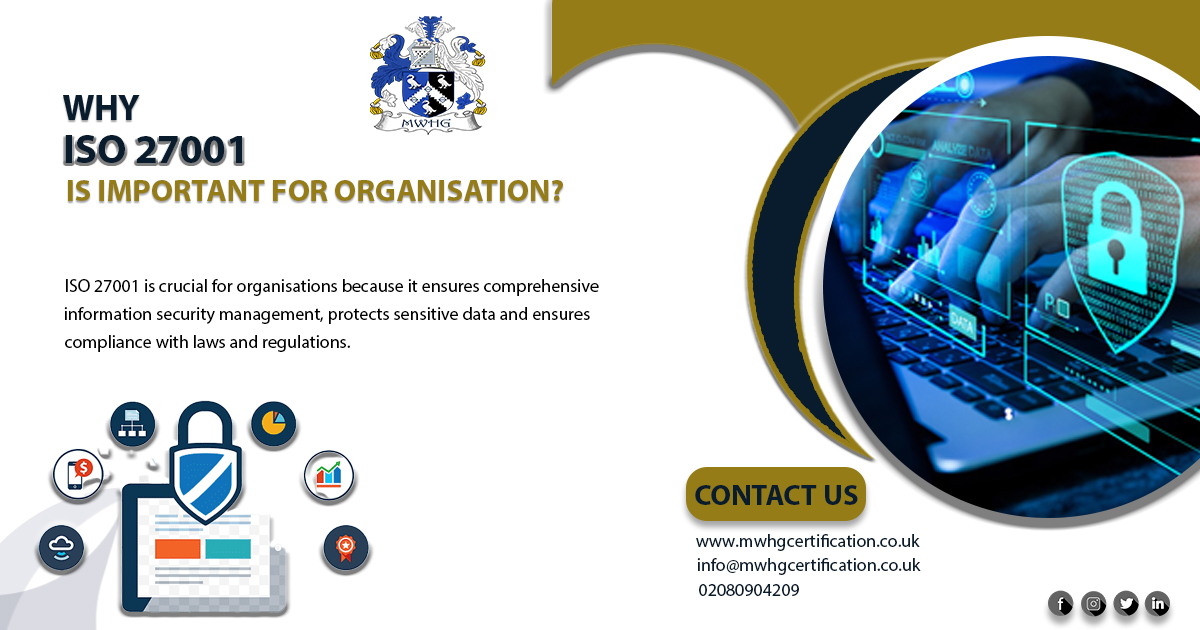
Protecting intellectual property and maintaining confidentiality are paramount in the digital age, especially when collaborating on projects remotely. The ease of sharing information online also makes it easier for sensitive data to be compromised, leading to significant legal and financial repercussions. This section will explore strategies for safeguarding your intellectual property and ensuring confidentiality during collaborative efforts.
Strategies for Protecting Intellectual Property During Collaborative Projects
Protecting intellectual property during collaborative projects requires a proactive and multi-faceted approach. This involves not only technological safeguards but also clear legal agreements and a culture of security awareness among team members. Ignoring these measures can lead to costly litigation and damage to your reputation.
Firstly, clearly define ownership and usage rights from the outset. This should be detailed in a legally binding agreement, outlining who owns what intellectual property created during the collaboration, and how it can be used and shared. This agreement should explicitly address scenarios such as termination of the project or disputes among collaborators.
Secondly, employ robust access control mechanisms. This includes using password-protected documents, limiting access to specific individuals or groups, and utilizing version control systems that track changes and allow for rollback to previous versions. Regular audits of user access rights are crucial to identify and rectify any unauthorized permissions.
Thirdly, utilize encryption for sensitive data. End-to-end encryption ensures that only authorized individuals can access the information, even if it’s intercepted during transmission. Consider using encrypted cloud storage solutions or implementing encryption protocols within your chosen collaboration platform.
Best Practices Checklist for Maintaining Confidentiality in Digital Collaborations
Maintaining confidentiality requires a commitment from every team member. This checklist summarizes essential steps to mitigate risks and protect sensitive information.
Before embarking on any digital collaboration, establish clear guidelines and expectations regarding data handling and security. Regular training and reminders are essential to reinforce these practices.
| Practice | Description | Example | Benefit |
|---|---|---|---|
| Use strong passwords and multi-factor authentication | Employ complex passwords and enable multi-factor authentication on all collaborative platforms and accounts. | Using a password manager with 16+ character passwords and enabling 2FA with an authenticator app. | Prevents unauthorized access even if passwords are compromised. |
| Encrypt sensitive data | Use encryption tools for emails, files, and cloud storage to protect data at rest and in transit. | Using PGP encryption for emails or encrypting files before uploading them to cloud storage. | Protects data from unauthorized access even if the storage is compromised. |
| Restrict access to sensitive information | Limit access to sensitive documents and data to only those who need it. | Using role-based access control in cloud storage to limit access to specific users or groups. | Reduces the risk of data breaches by limiting the number of people who can access sensitive information. |
| Regularly update software and security protocols | Keep all software and operating systems up to date with the latest security patches. | Enabling automatic updates on all devices and software used for collaboration. | Mitigates vulnerabilities that could be exploited by attackers. |
Access Control Mechanisms for Collaborative Documents
| Mechanism | Description | Advantages | Disadvantages |
|---|---|---|---|
| Password Protection | Restricting access to a document or folder with a password. | Simple to implement; widely supported. | Passwords can be lost or shared; offers limited granular control. |
| Role-Based Access Control (RBAC) | Assigning different access levels (read, write, edit) based on user roles. | Fine-grained control; suitable for large teams. | More complex to set up and manage. |
| Digital Rights Management (DRM) | Applying restrictions to how a document can be used (printing, copying, sharing). | Strong control over document usage. | Can be complex; may impact usability. |
| Access Control Lists (ACLs) | Specifying individual users or groups with specific permissions. | Granular control; flexible access management. | Can become cumbersome to manage for large numbers of users. |
Watermarks and Digital Signatures
Watermarks and digital signatures provide additional layers of security and authenticity. Watermarks, typically embedded within the document itself, visibly display ownership information, deterring unauthorized copying and distribution. Digital signatures, on the other hand, cryptographically verify the document’s origin and integrity, ensuring it hasn’t been tampered with. They provide irrefutable proof of authorship and authenticity. For instance, a legal contract bearing a digital signature carries much more weight in court than an unsigned copy.
The use of both significantly strengthens the protection of intellectual property.
Threats and Vulnerabilities in the Digital Landscape
Secure collaboration hinges on robust security practices, yet the digital landscape is rife with threats and vulnerabilities that can compromise sensitive data and disrupt workflows. Understanding these risks is crucial for implementing effective safeguards. This section will explore common cyber threats, vulnerabilities in collaboration technologies, and social engineering tactics, ultimately providing a framework for a comprehensive security awareness training program.
Common Cyber Threats Targeting Collaborative Platforms
Collaborative platforms, by their nature, are attractive targets for cybercriminals. Phishing attacks, for instance, often exploit the trust inherent in these platforms. Malicious emails mimicking legitimate requests from colleagues or platform administrators may trick users into revealing credentials or downloading malware. Ransomware attacks can encrypt shared files, holding data hostage until a ransom is paid. Data breaches, resulting from vulnerabilities in the platform itself or weak user security practices, can expose confidential information to malicious actors.
These threats underscore the need for strong passwords, multi-factor authentication, and regular security updates.
Vulnerabilities of Different Collaboration Technologies
Cloud storage services, while offering convenience and scalability, present vulnerabilities if not properly secured. Improperly configured access controls can allow unauthorized individuals to view or modify sensitive data. Data leaks can occur due to insufficient encryption or weak security protocols. Video conferencing platforms, increasingly popular for remote collaboration, are susceptible to “zoombombing” – unauthorized individuals joining meetings to disrupt or cause harm.
They also face vulnerabilities related to data interception and eavesdropping if security features aren’t properly utilized. The use of unpatched software across all collaboration technologies dramatically increases the risk of exploitation.
Social Engineering Techniques Used to Compromise Secure Collaborations
Social engineering manipulates individuals into divulging confidential information or performing actions that compromise security. Pretexting, a common tactic, involves creating a believable scenario to gain trust and access. For example, an attacker might pose as a tech support representative requesting remote access to a user’s computer. Baiting involves enticing users to click on malicious links or attachments disguised as legitimate documents or files shared within a collaboration space.
Phishing, as mentioned earlier, remains a highly effective social engineering technique. These methods exploit human psychology, highlighting the importance of employee training in recognizing and avoiding these tactics.
Security Awareness Training Program for Employees
A comprehensive security awareness training program is essential to mitigate the risks associated with digital collaboration. The program should include modules covering:
- Identifying and avoiding phishing attempts: Training should focus on recognizing suspicious emails, links, and attachments, emphasizing the importance of verifying the sender’s identity and reporting suspicious activity.
- Understanding malware and its impact: Employees should learn about various types of malware, how they spread, and how to protect their devices from infection.
- Implementing strong password practices: The program should emphasize the importance of using strong, unique passwords for all accounts and enabling multi-factor authentication wherever possible.
- Recognizing and avoiding social engineering tactics: Training should cover common social engineering techniques, such as pretexting and baiting, and equip employees with the skills to identify and avoid these scams.
- Following data security policies and procedures: Employees should be thoroughly familiar with their organization’s data security policies and procedures and understand their responsibilities in protecting sensitive information.
- Reporting security incidents: A clear and efficient process for reporting security incidents should be established, and employees should be trained on how to report suspicious activity promptly.
Regular refresher training and simulated phishing exercises can reinforce learning and enhance employee awareness. This proactive approach strengthens the overall security posture of the organization.
Best Practices for Secure Collaboration
Secure collaboration is no longer a luxury; it’s a necessity in today’s interconnected world. Choosing the right tools and implementing robust security measures are crucial for protecting sensitive data, maintaining confidentiality, and ensuring the smooth operation of any collaborative project. This section Artikels best practices to help you navigate the complexities of secure collaboration and mitigate potential risks.
Choosing Secure Collaboration Platforms and Tools
Selecting a secure collaboration platform requires careful consideration of several factors. Prioritize platforms with a strong track record of security, offering features like end-to-end encryption, robust access controls, and regular security updates. Consider the platform’s compliance with relevant industry standards and regulations (like GDPR, HIPAA, etc.). Open-source platforms can offer transparency, allowing for independent security audits, but require more technical expertise to manage securely.
Conversely, commercial platforms often provide comprehensive support and readily available security updates. The ideal choice depends on your organization’s specific needs, technical capabilities, and risk tolerance. A thorough vendor evaluation process, involving security experts, is highly recommended.
Strong Passwords, Multi-Factor Authentication, and Access Controls
Robust authentication is the first line of defense against unauthorized access. Strong passwords, incorporating a mix of uppercase and lowercase letters, numbers, and symbols, are essential. However, relying solely on passwords is insufficient. Multi-factor authentication (MFA) adds an extra layer of security, requiring users to verify their identity through multiple methods (e.g., password, one-time code from an authenticator app, biometric scan).
Access controls, based on the principle of least privilege, ensure that users only have access to the information and resources necessary for their roles. This limits the potential damage from compromised accounts and prevents data breaches. Regular password rotation and employee training on password hygiene are also crucial components of a robust authentication strategy.
Regular Security Audits and Vulnerability Assessments
Proactive security measures are vital for identifying and addressing vulnerabilities before they can be exploited. Regular security audits provide an independent assessment of your collaboration platform’s security posture, identifying weaknesses and compliance gaps. Vulnerability assessments use automated tools to scan for known security flaws in software and systems. These assessments, coupled with penetration testing (simulated attacks to identify exploitable weaknesses), offer a comprehensive understanding of your security risks.
The findings from these assessments should be used to prioritize security improvements and implement necessary remediation measures. Consider engaging external security experts for these assessments, especially for complex systems.
Implementing Secure File Sharing and Document Management Practices
Secure file sharing and document management are critical for protecting sensitive information. Avoid using insecure methods like emailing large files or using public cloud storage services without proper encryption. Instead, utilize secure file sharing platforms that offer encryption both in transit and at rest. Implement version control to track changes and prevent accidental data loss. Clearly defined access permissions should ensure that only authorized individuals can access specific files and folders.
Regular backups of important files are essential to recover data in case of a breach or system failure. Watermarking sensitive documents can also help deter unauthorized sharing and distribution. Regular training for employees on secure file handling practices is equally important. Consider using a centralized document management system that offers robust access controls, version history, and audit trails.
The Role of Technology in Enhancing Security
Secure collaboration in the digital age relies heavily on robust technological solutions. The right tools not only facilitate seamless teamwork but also act as the first line of defense against data breaches and security threats. This section explores several key technologies that significantly bolster security in collaborative environments.
Encryption Methods for Secure Communication
Encryption is fundamental to protecting sensitive data during collaboration. It transforms readable data (plaintext) into an unreadable format (ciphertext) using an encryption key. Only those possessing the decryption key can access the original data. Symmetric encryption, using the same key for encryption and decryption, is faster but requires secure key exchange. Asymmetric encryption, using separate public and private keys, is more secure for key distribution, with the public key used for encryption and the private key for decryption.
Examples include the widely used TLS/SSL protocols for securing web traffic and PGP for encrypting emails and files. The strength of encryption lies in the length and complexity of the keys used, and the robustness of the algorithm itself. Strong encryption significantly reduces the risk of data interception and unauthorized access.
Digital Signatures for Data Integrity and Authentication
Digital signatures provide authentication and integrity verification for digital documents and communications. They use cryptographic techniques to ensure that a document hasn’t been tampered with and that it originates from the claimed sender. A digital signature is essentially a cryptographic hash of a document, encrypted with the sender’s private key. Recipients can verify the signature using the sender’s public key.
If the signature is valid, it confirms the document’s authenticity and integrity. This is crucial for collaborative projects involving legal agreements, financial transactions, or sensitive intellectual property, ensuring trust and accountability. For instance, digital signatures are commonly used in e-commerce and online banking to secure transactions.
Blockchain Technology for Enhanced Transparency and Security
Blockchain technology, known for its decentralized and immutable nature, offers unique security advantages for collaboration. A blockchain is a distributed ledger that records transactions in blocks, linked cryptographically. This creates a transparent and auditable record of all collaborative activities, making it difficult to alter or delete information. The decentralized nature also makes it resistant to single points of failure and cyberattacks.
While still emerging in widespread collaborative applications, blockchain holds promise for securing sensitive data and managing access rights in collaborative projects where trust and transparency are paramount. Imagine a collaborative project where all edits and changes to a document are recorded on a shared blockchain, creating a verifiable history of contributions.
Zero-Trust Security Models in Collaborative Environments
Zero-trust security models operate on the principle of “never trust, always verify.” Unlike traditional perimeter-based security, zero trust assumes no implicit trust granted to any user or device, regardless of location. Access to resources is granted based on continuous verification of identity and context. This involves multi-factor authentication, micro-segmentation of networks, and continuous monitoring of user activity.
The implementation of zero trust in collaborative environments minimizes the impact of breaches, as even if one system is compromised, access to other resources remains restricted. This approach is particularly valuable in hybrid and remote work environments where users access company resources from various locations and devices.
Access Control Lists (ACLs) and Their Implications
Access control lists (ACLs) define which users or groups have permission to access specific resources. Different types of ACLs exist, varying in granularity and complexity. For example, a simple ACL might grant read, write, or execute permissions to specific users or groups. More sophisticated ACLs can implement role-based access control (RBAC), granting permissions based on user roles rather than individual identities.
Attribute-based access control (ABAC) goes further, using attributes such as location, time, and device to determine access. The choice of ACL type depends on the security requirements and complexity of the collaborative environment. Properly configured ACLs are crucial for preventing unauthorized access and data leaks.
Artificial Intelligence for Threat Detection and Prevention
Artificial intelligence (AI) plays an increasingly important role in enhancing security in collaborative systems. AI-powered security tools can analyze vast amounts of data to identify patterns and anomalies indicative of malicious activity. This includes detecting phishing attempts, malware infections, and insider threats. AI algorithms can learn from past incidents to improve their accuracy in detecting and preventing future threats.
Real-time threat detection and automated responses significantly reduce the time it takes to address security incidents. For example, AI can automatically block suspicious login attempts or flag unusual file access patterns.
Building a Culture of Security
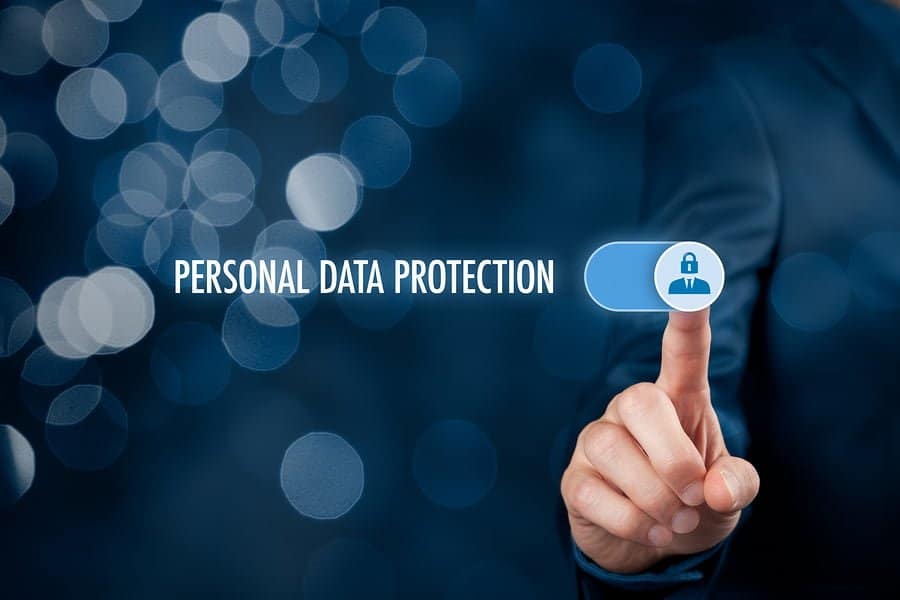
Cultivating a robust security posture isn’t solely about implementing technical safeguards; it’s fundamentally about fostering a security-conscious culture within your organization. This involves embedding security awareness into the very fabric of how your team works, ensuring that everyone understands their role in protecting sensitive information. A strong security culture is proactive, not reactive, anticipating potential threats and acting accordingly.Security awareness training isn’t a one-time event; it’s an ongoing process.
Regular, engaging training sessions are crucial to keeping employees informed about the latest threats and best practices. This approach helps reinforce good habits and ensures that employees remain vigilant against evolving cyber risks. Furthermore, a culture of security promotes open communication, encouraging employees to report suspicious activities without fear of reprisal. This proactive approach significantly improves an organization’s ability to identify and mitigate potential threats quickly and effectively.
Regular Security Training and Awareness Programs
Effective security training goes beyond simply presenting a list of rules. It should involve interactive sessions, realistic scenarios, and engaging materials that resonate with employees. For example, simulating phishing attacks can help employees learn to identify and report suspicious emails. Gamification techniques, such as quizzes and challenges, can make learning more fun and memorable. Regular refresher courses are also essential to reinforce key concepts and address emerging threats.
Consider incorporating real-world examples of data breaches and their consequences to highlight the importance of security protocols. The frequency of training should be tailored to the organization’s risk profile and the sensitivity of the data handled. Annual training is a good starting point, but more frequent updates might be necessary for employees who handle particularly sensitive information.
Promoting Responsible Use of Collaboration Tools and Platforms
Clear guidelines and policies regarding the responsible use of collaboration tools are essential. These policies should address issues such as password security, data sharing practices, and acceptable use of company devices. Regular communication about these policies is key, using multiple channels such as emails, intranet postings, and team meetings. Providing employees with easy-to-understand guides and quick reference sheets can further enhance understanding and compliance.
For instance, a simple checklist for securing shared documents or a quick guide on recognizing phishing attempts can make a significant difference. Furthermore, leadership should actively model responsible behavior, demonstrating commitment to security protocols and encouraging employees to do the same.
Effective Communication Strategies for Security Risk Education
Effective communication is paramount in fostering a security-conscious culture. Avoid technical jargon and use clear, concise language that everyone can understand. Instead of lengthy policy documents, consider using short, engaging videos or infographics to convey key security messages. Regular newsletters, email updates, and internal communication platforms can be used to share security news, tips, and best practices.
Organizing interactive workshops and Q&A sessions provides opportunities for employees to ask questions and receive clarification on security-related matters. Celebrating successes and recognizing employees who demonstrate strong security practices can further reinforce positive behaviors. For example, highlighting an employee who successfully identified a phishing attempt can encourage others to be more vigilant. Open communication channels also encourage employees to report security incidents without fear of blame, creating a more secure and collaborative environment.
End of Discussion
So, there you have it – a glimpse into the vital world of secure collaboration in the digital age. Protecting your data, your intellectual property, and your reputation isn’t just about implementing the right tools; it’s about fostering a culture of security awareness. By understanding the risks, embracing best practices, and staying vigilant, you can ensure that your collaborative efforts thrive in a secure and productive environment.
Remember, a little proactive effort goes a long way in preventing major headaches (and potentially disastrous breaches) down the line. Let’s work smarter, not harder, and keep our digital collaborations safe!
Questions and Answers
What are some common signs of a compromised collaboration platform?
Unusual login activity, unauthorized access to files, suspicious emails or messages from within the platform, and performance slowdowns can all be indicators of a breach.
How often should security audits be performed?
The frequency depends on your industry and risk tolerance, but at least annually, and more frequently if you handle highly sensitive data.
What’s the difference between multi-factor authentication and two-factor authentication?
Two-factor authentication typically uses two methods (like a password and a code from your phone). Multi-factor authentication can use more than two methods for increased security.
How can I educate my team about cybersecurity best practices?
Regular training sessions, phishing simulations, and clear communication about security policies are all effective methods.


